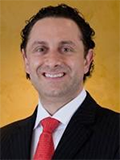What do professional athletes know about rapid recovery after injury that you don’t? It has now become common place to hear about sports icons returning to play after serious injuries in what seems like record time. In addition to superb conditioning and first class medical teams, many athletes are turning to PRP or Platelet Rich Plasma to speed up healing. Platelet Rich Plasma (PRP) has become one of the fastest growing treatments in post-surgical healing in many medical specialties including Cosmetic Plastic Surgery.
PRP is a product that is composed of a patient’s own blood platelet components, plasma, and a small amount of red blood cells. This cocktail of blood products contains a concentrated amount of platelets which are key cells in a cascade of steps in the wound healing process. Platelets contain a high concentration of growth factors that are released upon injury to regulate healing. These growth factors improve new blood vessel growth, collagen deposition, and the recruitment of other cells responsible for healing. By adding these components in a concentrated form to injured tissue, PRP has been shown to speed up the healing process in a variety of tissues including bone, muscles, tendons, skin and even fat. The recent growth in use of PRP’s is a result of improved technology that has made its safe and consistent preparation an in-office outpatient procedure.
The effectiveness of PRP as a therapy is still somewhat variable when the scientific literature is reviewed objectively. Laboratory studies show the most promise as the experimental factors can be most effectively controlled. The results of clinical, human studies have been somewhat more variable. Bone and tendon studies have shown a lot of variability in results. Soft tissue studies are more promising, specifically in Plastic Surgery. Healing after skin grafts and laser resurfacing is accelerated due to the local effect of growth factors. Fat graft survival has also been improved in the laboratory. It is commonly used in facial surgery such as facelifts but the results are difficult to measure. Injection for facial rejuvenation as is marketed as part of a non-surgical facelift has not been shown to be effective and remains controversial
Despite these differing reports, what is clear is that PRP is one of the most exciting advances in post-surgical healing currently being studied. It is expected that within the next 6-24 months a larger number of well-designed clinical studies will further clarify the most successful applications for PRP in Plastic Surgery & other specialties. Today, this FDA cleared treatment appears to be most effective when used in healing after cosmetic resurfacing procedures, skin grafts, or potentially fat grafting procedures. When considering the use of PRP after a surgical procedure, discuss the potential benefits, cost, and risk associated with its use with your doctor.

George Bitar, MD, FACS is an award-winning, board-certified cosmetic and reconstructive plastic surgeon, the Founder and Medical Director of Bitar Cosmetic Surgery Institute in Virginia. He specializes in the latest surgical and minimally invasive techniques to scar management and reduction. Dr. Bitar is involved in groundbreaking research and education in plastic surgery and has authored numerous articles, abstracts, and chapters.




